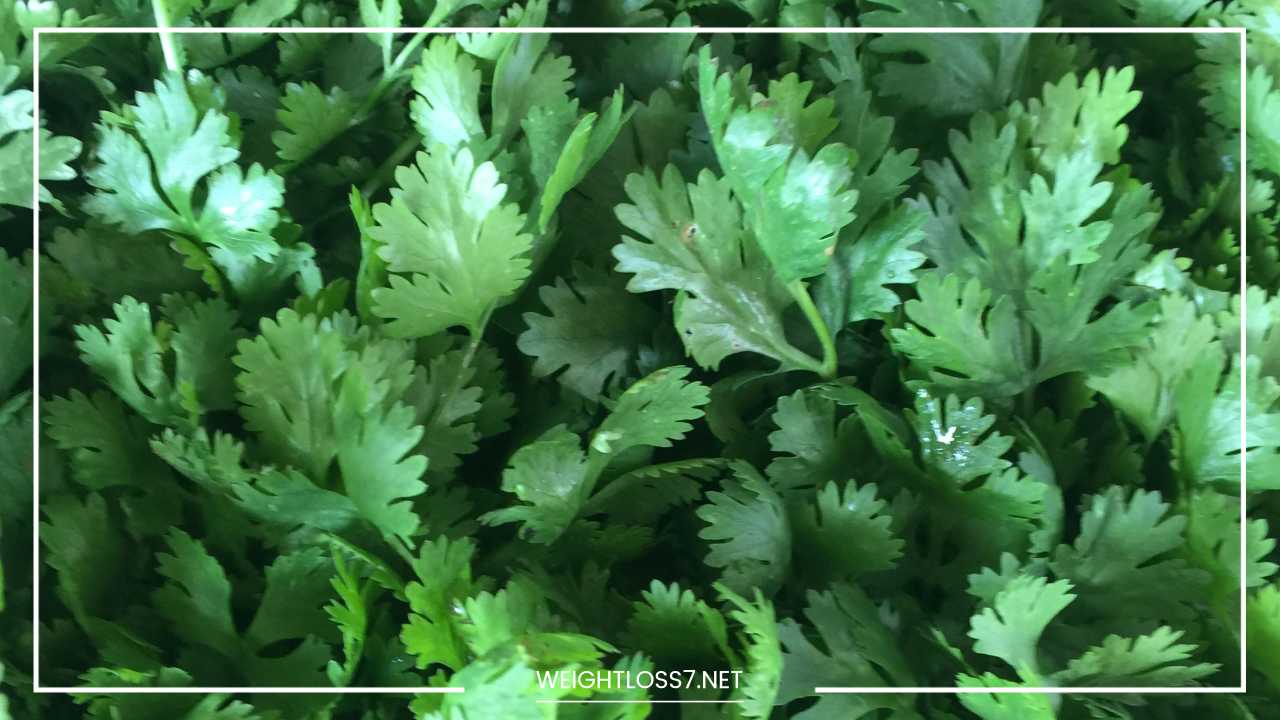Cilantro Uses and Health Benefits

Cilantro
Cilantro: A Versatile Herb with a Rich History
Introduction: Cilantro, also recognized as Chinese parsley and Coriander, emerges as a remarkable herb with a rapid growth rate, belonging to the carrot family.
Renowned for its distinctive aroma, it plays a pivotal role in the culinary landscapes of Mexican, Asian, and Caribbean cuisines.
The herb, sharing familial ties with Parsley, has traversed through time, originating in Egypt, India, and China, before making its way to Mexico and Peru, ultimately gaining popularity in specific regions of the United States.
Although embraced warmly in diverse cultures, Europe’s reception of Cilantro has dwindled due to the strong scent that repels many.
Global Adoption and Cultural Significance:
As Cilantro found its way into Mexican and Peruvian kitchens, it became an integral component in the creation of masterful dishes, often harmonizing with the spiciness of chilies.
Its versatility has allowed it to adapt and flourish in the United States, becoming a staple in various culinary traditions.
Despite its global popularity, Europe stands as an exception, where the aversion to its potent fragrance has resulted in a decline in its acceptance.
The etymology of the term “Cilantro” adds an intriguing layer to its identity, as it originates from the Greek word “koris,” meaning bedbug.
The alleged resemblance of Cilantro’s scent to that of a bedbug is a curious aspect that underscores the herb’s complex relationship with human perception and preference.
In contrast, the Chinese, unfazed by such olfactory associations, not only embrace Cilantro in their cuisine but also attribute symbolic significance to it.
To them, Cilantro symbolizes immortality and possesses aphrodisiac properties, often finding its way into love potions.
Additionally, many believe in its role as an appetite stimulant, further cementing its place in traditional Chinese medicine.
Chinese Influence and Symbolism:
The profound influence of Cilantro in Chinese culture extends beyond the realm of culinary applications. Its symbolism in representing immortality and acting as an aphrodisiac showcases the multifaceted nature of this herb.
In Chinese traditional medicine, Cilantro is valued for its potential as an appetite stimulant, contributing to its widespread use in various contexts.
Its availability in local grocery stores and fruit markets throughout the year makes it a convenient ingredient for those looking to incorporate it into their dishes or remedies.
Historical References:
Delving into history, Cilantro emerges as a herb with a legacy that transcends culinary applications. The presence of Cilantro is noted in the Old Testament, hinting at its early recognition and utilization.
Archaeological findings in King Tut’s tomb, revealing Cilantro seeds, further attest to its historical significance. Physicians, dating back to the era of Hippocrates, acknowledged the herb’s medicinal properties.
In ancient Egypt, Cilantro was employed to address various health concerns, ranging from headaches to urinary tract infections.
The herb’s versatility is evident in its dual role as both a culinary enhancer and a medicinal remedy in historical contexts.
Dual Identity:
One of the intriguing aspects of Cilantro is its dual identity, transitioning from Cilantro in its early stages to Coriander in its mature form.
This metamorphosis underscores the herb’s adaptability and diverse applications. Beyond its culinary uses, Cilantro served practical purposes in earlier cultures, notably as a means to mask the scent of rotting meat.
This dual nature adds a layer of complexity to Cilantro’s character, making it a herb with distinct roles at different stages of its growth.
Growing and Harvesting Tips:
Cilantro’s appeal is not limited to its varied applications; it extends to its cultivation and harvesting. Known for its rapid growth, Cilantro is a herb that, paradoxically, has a short lifespan.
However, its adaptability allows for easy cultivation in pots, even on windowsills. Harvesting Cilantro at the right time is crucial, as waiting too long results in the development of Coriander, with the herb transitioning to a seed-producing stage.
The emphasis on harvesting before bolting or blooming highlights the importance of timing in preserving the leaves and stems, the sought-after components in culinary applications.
Modern Culinary Landscape:
In contemporary times, Cilantro has transcended its historical and cultural roots, becoming a ubiquitous garnish in upscale restaurants across the United States.
Its presence on almost every plate speaks to its versatility and the appreciation for its distinct flavor profile.
However, the curious dichotomy surrounding Cilantro persists, as individuals tend to fall into two camps – those who love it and those who detest it.
Detractors often describe a soapy taste associated with Cilantro, while enthusiasts celebrate its robust and pungent flavor.
Final Thoughts:
Cilantro’s journey from ancient civilizations to modern kitchens is a testament to its enduring appeal and adaptability.
Whether utilized in traditional remedies, love potions, or as a culinary delight, Cilantro has maintained its mystique and cultural significance throughout the ages.
Its rich history, dual identity, and diverse applications make it a fascinating herb that has left an indelible mark on global cuisine and beyond.
As Cilantro continues to be a polarizing yet influential herb, its aromatic essence and versatile nature persist in captivating the taste buds of individuals worldwide, ensuring its enduring presence in the culinary world and cultural tapestry.

















